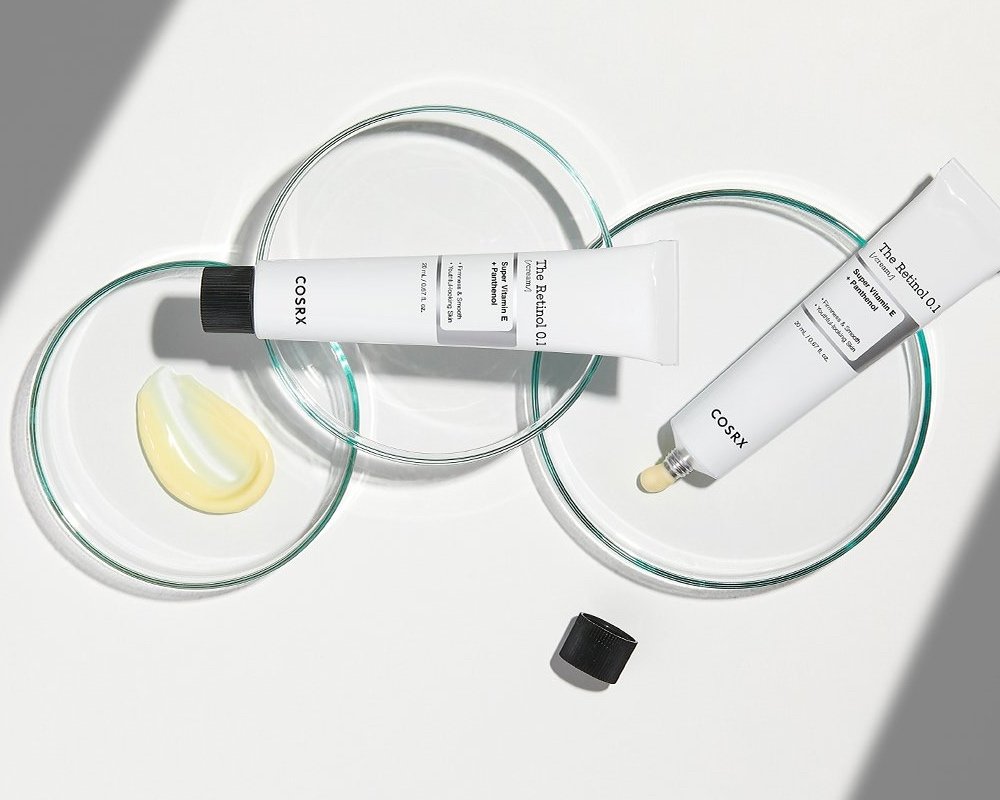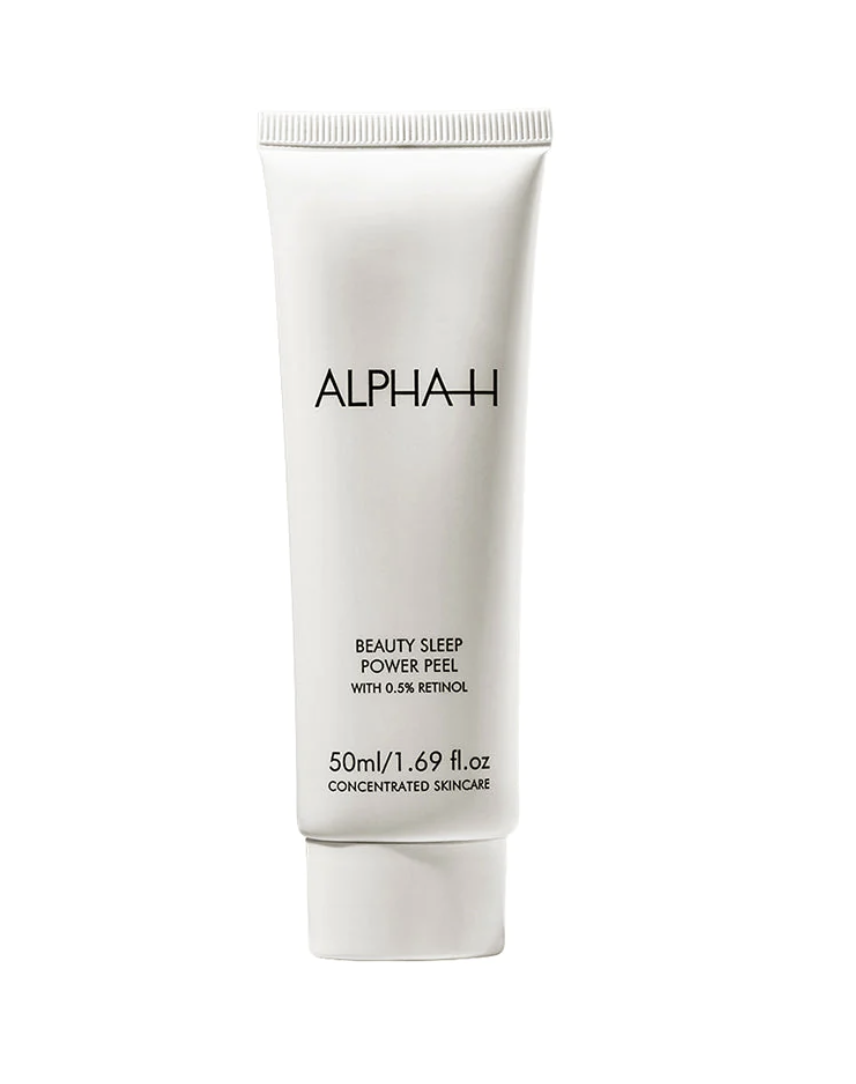Everything you Really Need to Know About Retinol
Of the all the actives in our skincare, retinol is the one ingredient that has been universally backed by scientists to transform the appearance of fine lines and wrinkles.
And’s it’s not just wrinkles that can benefit by this science backed ingredient. Retinoids have been shown to diminish acne and dark spots, whilst also reducing the amount of atypical skin cells that could lead to skin cancer.
Yes, that’s right, according to the Scientists at Harvard, this skincare superhero even has has caner preventing abilities! Yet despite all the buzz surrounding Retinol, many of us are either unsure how to use it or too scared to even try it.
The problem, is where it’s power lies. Retinol is such a potent ingredient, that it is almost too easy to overdo it. Get the dosage just right and your skin positively glows. One pump to many and you’re a dry, flakey, red mess. Then there’s the matter of trying to figure out the right dose for your skin type, because that’s the other thing with retinol, it’s not a one size fits all kind of product and what might work for your bestie won’t necessarily work for you.
The key to getting Retinol right is all about education. Beginning with, what Retinol is and what it does does to your skin.
WHAT ARE RETINOIDS
An essential nutrient, Vitamin A is vital for cellular turnover and skin health. The stumbling block is, that our body can’t produce Vitamin itself, which means we need to get it from other sources through our diet and by feeding our skin topically. Topical Retinoids such a Tretinoin, Retinyl palmitate, Retinol and Adapalene, can all help to restore the Vitamin A levels in our skin.
A Vitamin A derivative, Retinoids work at a deep cellular level stimulating collagen and elastin production by accelerating the rate of cell turnover in the skin, allowing fresh new cells to reach their way to your skin’s surface significantly faster than they usually would. With a whole host of aesthetic benefits from slowing down the cellular aging process to regulated sebum productions, and reducing the appearing of both pigmentation and wrinkles, there aren’t many of us who wouldn’t benefit from the addition of a retinoid in our skincare return.
There are six main types of retinoids used in skincare:
RETINYL ESTERS (RETINYL PALMITATE) - The least-potent of the retinoids. This is a great option if you have sensitive or excessively dry skin, are’t yet worried about skin ageing or are new to retinoids.
GRANACTIVE RETINOID HYDROXYPINACOLONE RETINOTE (HPR) - The new kid on the block. A retinol alternative those with reactive or sensitive skin. Despite being 10 times more potent than pure retinol, it is more gentle so there is little to no irritation.
RETINOL - This is the standard ingredient found in most over the counter products.
RETINALDEHYDE - Stronger than retinol, this one is ideal for those with sensitive or delicate skin who want to see results but don’t think their skin can handle a perceptive retinoid.
ADAPALENE -Now available over the counter, it’s the first retinoid available without prescription that has FDA-approved for acne.
TRETINOIN - Available by perception only in the UK, this potent retinoid is for anyone looking wanting faster and more dramatic resulst or looking to treat acne or acne scars.
TAZAROTENE - The most powerful of the retinoids, with the most powerful results but also the hardest to tolerate. Unsurprisingly, you can only get Tazorotene under prescription only. Recommended only for those who’s skin tolerates retinoid well.
WHAT PERCENTAGE OF RETINOID SHOULD I USE?
The rule of thumb is start low and gradually build up your tolerance until you can increase your percentage.
Most experts would advice starting with a 0.1% or 0.25% retinol, applying it every other night until you’re skin gets use to it and then increase to every nights. Gradually over time you can think about increasing it 0.5% and then up 1%, but always following the caveat of using it just a few nights a week, let your tolerance has been built up then think about increasing the frequency or the strength. .
It is also worth considering the delivery method of your retinoid as this can make a huge difference to how your tolerate it. Retinoids that are listed as “encapsulated” help buffer the retinoid with the addition of gentle formula while those with “time-release technology” drip-feed the ingredient over time.
Finally think about application. Always apply retinol on freshly cleansed skin, making sure that you skip other exfoliators like AHA’s & BHA’s to avoid compromising the skin barrier and causing irritation. Don’t go heavy handed on the application. A pea sized amount for each area; face, neck and décolletage is more than enough. Furthermore, it’s essential to wear a broad-spectrum SPF (30 or above) every day rain or shine when using retinol, as it may make your skin more photosensitive.
CAN I MIX MY RETINOID WITH OTHER ACTIVES?
Technically there is no reason why not, however is you are new to the retinol game you might want to pair your retinoid with something more soothing such as hylaruonic acid instead of one which could add further irritation such as vitamin c. For optimal results, wait at least 30 minutes before applying any other serums or moisturisers on top of your retinoid.
WHAT ARE THE SIDE EFFECTS OF RETINOIDS?
Other than beautiful skin, it’s important to remember that retinoids can be highly reactive causing a variety of unwanted side effects if you aren’t using the right strength or application for your skin type. These include redness, dryness, peeling, flaking, soreness and inflammation. Which is why it is so essential that you get your dosage right and build up your tolerance slowly. Consistency is what’s important, so don’t be tempted to go too hard too soon, as you might end up regretting it.
WHAT AGE SHOULD I START USING A RETINOID?
There is no ideal age but most experts recommend starting as early as in your 20’s in order to reap the full benefits.
Its availability once restricted to the white walls of a dermatologist's office, this powerful active ingredient has now found its way into endless over-the-counter skincare products, with brands incorporating it into creams, serums, oils

























